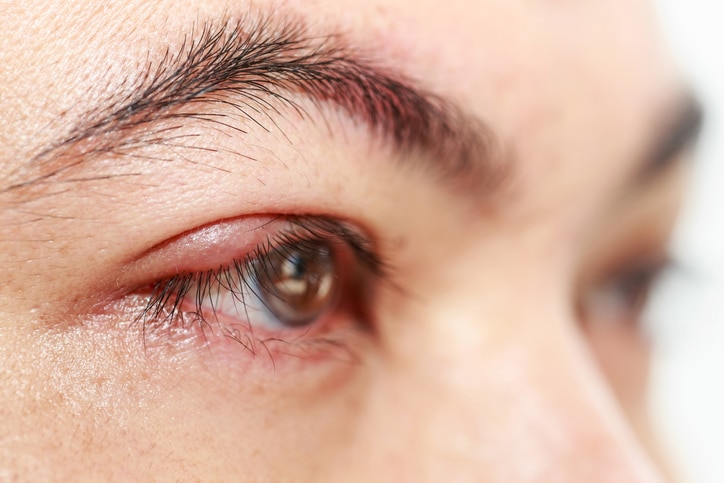6 Things You Need To Know When Choosing Lash Adhesive

In the world of lash artistry, the glue that binds the extensions is often the unsung hero. The importance of choosing the right lash adhesive cannot be overstated, as it directly influences the longevity, retention, and overall success of your lash extensions. But a one-size-fits-all approach doesn't apply to lash glue. So come with us to reveal this blog as the following is a compilation of the key characteristics you should prioritize before making any purchase decisions, helping you make informed decisions for impeccable lash session.
Factors to Consider When Choosing Lash Adhesive
Selecting the right lash adhesive involves considering various factors. Here are the most important factors for you to consider when determining the most suitable adhesive for your needs.
- Lashing Speed and Glue Curing Time
- Lash Extension Techniques
- Humidity and Temperature
- Longevity and Retention
- Fumes
- Allergies and Sensitivities
1. Lashing Speed and Glue Curing Time:

Lashing speed and glue curing time can be considered as the most critical factors in choosing lash adhesive. Because, lash artists work at different speeds, and so does lash adhesives. Choosing an adhesive that doesn't align with your pace can result in a more challenging and less efficient application process.
Choosing an adhesive that dries faster than your lashing speed can lead to incomplete bonding, difficulty in adjustment, increased stress, and the potential for lash clumping. The risk is that the extension will dry before you apply it to the natural lashes, resulting in incomplete bonding and, consequently, premature lash fall. Working with a faster-drying adhesive can also affect precision and the overall outcome, as there isn't enough time to make proper adjustments and it definitely will stress you out.

Opting for a slower adhesive than your lashing speed can bring a few challenges too. Firstly, it might stretch out the process, this means serving fewer clients in a set timeframe, affecting your business efficiency. Plus, considering lash sessions are already a couple of hours long, extending the time might make clients a bit fidgety and tired, and we want them to have the best experience! Secondly, the longer the adhesive takes to dry, the higher the risk of unintentional lash displacement. Lashes may shift before the glue sets, affecting the placement and overall look of the desired lash set.
So, it's like finding the right dance partner – timing is everything! The right balance prevents issues like premature lash fall and contributes to the overall quality of the lash look.
At LiiLash, we provide an extensive selection of lash adhesives designed to match diverse lashing speeds, offering drying times ranging from just 0.5 to 2 seconds.
- For beginners: we offer the Premium Sensitive Adhesive, with a 1-2 second drying time, will be the most ideal, prioritizing ease of use.
- For Advanced lash artists: opt for our Ultra Bonding Adhesive, which dries in just 0.5 seconds, ensuring efficiency without compromising the quality of the application.
2. Lash Extension Techniques:
Classic, volume, mega volume or hybrid techniques each demand a specific type of adhesive for the optimal results.
Classic lash extensions, where artists attach one extension to each natural lash, benefit from a slightly slower-drying adhesive (1-2 seconds). This allows lash artists the time needed for precise placement of individual extensions.
In contrast, volume and mega volume techniques, involving the attachment of multiple extensions to one natural lash, require faster-drying adhesives (0.5 seconds) to manage the complexity and density efficiently.
And for Hybrid lashes, a fusion of classic and volume techniques, a versatile adhesive that strikes a balance in drying time is ideal for accommodating the diverse requirements of this technique. Our adhesive range, featuring drying times ranging from 0.5 to 2 seconds, ensures flexibility and precision in hybrid lash application.
Discover our Lash Adhesive Collection right here!
3. Humidity and Temperature:
The environment's humidity level and temperature directly affects the curing time of the adhesive. Every adhesive has its own drying time, and to attain that exact drying time, it is essential that you adhere precisely to the indicated numerical instructions or else it would affect the quality of the overall lash extensions.
In higher humidity conditions, the adhesive tends to cure faster, while in lower humidity, the curing time may lengthen. For example, our lash glue collection is designed to perform best in a working humidity range of 45-60%. So, If you're applying lashes within this range, the adhesive tends to dry at a moderate pace. However, in a more humid environment (more than 65% humidity), the adhesive can dry almost instantly, leaving little time for adjustments during lash application. On the other hand, in drier conditions, the adhesive may not cure at all.
Similarly, temperature influences the adhesive's curing process. Warmer temperatures generally accelerate the drying time, while cooler temperatures slow it down.
To navigate these challenges, it's essential to be mindful of your surrounding environmental factors. Choose adhesives that align with the specific humidity and temperature conditions of your workspace. This ensures a more consistent and reliable curing process, allowing for precise application and better retention of lash extensions.
However, if you want to choose products that are not well-suited to your workspace environment, consider implementing temperature and humidity control measures such as air conditioning, humidifiers, or dehumidifiers.
4. Longevity and Retention:

Choosing the right lash glue is really important for how long your lash extensions last and how well they stick. "Longevity" means how long they endure, and it depends on the bond between your natural lashes and the extensions. A good glue makes sure your lash extensions stay put, reducing how often you need touch-ups or replacements.
"Retention" is about how well the lash extensions stick to your natural lashes without falling out too soon. Here at LiiLash, we are proud to have developed high quality lash adhesives. Our Lash adhesive collection keeps your lashes looking great for up to 8 weeks with proper care. Plus, all our glue products have a strong and long-lasting hold, so your lashes stay in place all day long.
5. Fumes:

The term "fumes" refers to the potentially irritating or odorous substances released by the adhesive as it cures. Inhaling too much chemical fumes can be uncomfortable and harmful for your health. Therefore, it's advisable to opt for low-fume or scented lash glue to improve the experience for both lash artists and clients throughout and after the application.
Also, some individuals may be sensitive or allergic to certain chemicals present in lash adhesives. Low-fume adhesives can help minimize the risk of adverse reactions, making them a safer choice for a broader range of clients.
For lash artists working in enclosed spaces, low-fume adhesives contribute to better indoor air quality. This is particularly important for the well-being of the lash artist, who may spend extended periods in close proximity to the adhesive.

Opting for adhesives with minimal fumes aligns with the goal of providing a high-quality and enjoyable lash extension experience.
6. Allergies and Sensitivities:
Lash adhesives can pose potential risks and allergic reactions for some individuals. The primary concerns include irritation, redness, swelling, or itching around the eyes. In rare cases, more severe allergic reactions may occur, leading to discomfort and potential long-term issues.

Given these potential risks, the use of hypoallergenic lash adhesives becomes crucial. Hypoallergenic adhesives are formulated with fewer allergens, reducing the likelihood of adverse reactions. Our LiiLash glue is made with safe, non-toxic and hypoallergenic ingredients, ensuring that even those with sensitive skin can use it.
Additionally, lash artists should emphasize the importance of conducting patch tests before the application. Patch tests involve applying a small amount of adhesive behind the ear or on the forearm in 20-30 minutes to check for any allergic reactions. This precautionary measure ensures client safety by identifying potential sensitivities before the adhesive comes in contact with the delicate eye area. Always patch test your client 24-48 hours prior to their treatment to ensure client safety.
Conclusion
Summarizing the wealth of information provided, the conclusion will highlight the key takeaways from the blog. Encouraging readers to leverage this comprehensive guide, lash artists can now make informed decisions, ensuring success in every lash application. The journey of choosing the right lash adhesive is an art in itself, and armed with this knowledge, artists can elevate their craft to new heights.
YOU MAY ALSO LIKE
Lash Supplies: 101 Tools Checklist!







